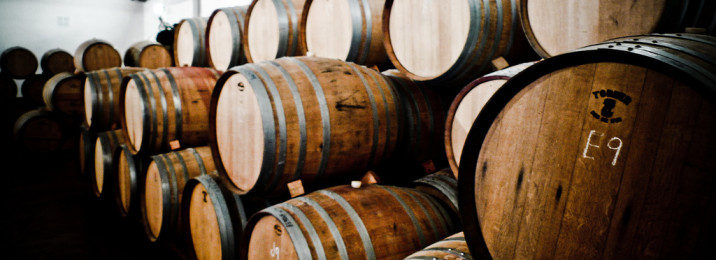A Brief History of Cava
Taking its name from the word cova, meaning ‘cave’ or ‘cellar’ in Catalan (the language of Catalonia, where 95% of this wine is produced), cava has until recently been viewed with derision as a cheap and somewhat tacky alternative to champagne.
However, this situation has been changing over the last few years, with snobbery beginning to soften as experts start taking cava more seriously – thanks in part to the efforts of Okhre and Gramona, two upmarket brands whose aim it has been to produce high-quality, sustainable Spanish sparklers that age well and can hold their own against their French and Italian counterparts. While cava might still lack the depth and creaminess of a good champagne, a decent one is crisp, clean and versatile - ideal for pairing with a range of Spanish foods, and particularly suited to the saltiness of tapas, seafood and olives.
It’s also perfect as a base for sparkling cocktails, since it’s both lighter and more cost-effective than champagne. A classic example, typically shared from a jug like sangria, is Agua de Valencia, a heady blend of cava, orange juice, vodka and gin, sweetened with triple sec and sugary syrup.
The first Spanish sparkling wine is thought to have originated at the Codorníu Winery in 1872 where Josep Raventós set out to create a Spanish version of the French champagne – the characteristic corks for which had long been manufactured in Catalonia. After a plague of phylloxera swept in from America via France and desolated large swathes of the region’s typically red grapes, farmers replanted their vineyards with predominantly white ones. Macabeo, Parellada and Xarello are all common in cava production, as well as non-native varieties used for champagne like Chardonnary and Pinot Noir.
Although by European law cava is no longer allowed to be called either champán/champaña or (in Catalan) xampany, the traditional French method of production (méthode champenoise) remains the same, and only wines that use this process (whereby they are left to finish fermenting in the bottle, creating a natural fizz) may be called cava. Similar to champagne, cava also has a legal designation of origin (DO), which means the name cannot be used to market any wine produced outside of the areas of Penedès (near Barcelona in Catalonia), Aragon, the Basque Country, Castille and León, Extremadura, Navarra, Rioja, and Valencia.
Not long after its first introduction more than 140 years ago, cava had caught on in Spain and sales fast exceeded those of foreign sparkling wines. Nowadays (over 225 million bottles later) cava is a national icon and one of Spain’s most successful foreign exports.
There are a number of ways by which cava is classified, according to age and flavor. In terms of dryness, it ranges between brut nature with no added sugar, through extra brut, brut, extra seco, seco, semiseco, and dulce – sweet with more than fifty grams of sugar per liter. If a cava is described as Joven, then it has been ageing in the bottle for anywhere between nine and fifteen months, up to thirty months if it is a Reserva and over thirty if it is Gran Reserva.
Among the Spanish, cava tends to be saved for special occasions such as weddings and Christmas, but it’s also increasingly common to find people sipping a chilled glass with their tapas – especially in Barcelona and other parts of Catalonia – thanks to its light and neutral flavor that goes with almost anything: meat, fish, cheeses, desserts, or even just a good old conversation. It’s not quite champagne, but it doesn’t have to be; this is at once a more humble, more versatile, and often better value alternative.
Come and enjoying our Cava’s at Ataula and make it a tapas night. Haven’t seen our wine list? here it is, give it a quick look.
¡Salud!


No comments
You can be the first one to leave a comment.